

Franz Nölken [1] (born 5 May 1884 – died 4 November 1918) was a German Expressionist painter; occasionally associated with Die Brücke, an artists' society in Dresden.


Franz Nölken [1] (born 5 May 1884 – died 4 November 1918) was a German Expressionist painter; occasionally associated with Die Brücke, an artists' society in Dresden.
Franz Noelken was born 5 May, 1884 in Hamburg. At the age of sixteen, he began attending the Johanneum, a liberal arts gymnasium. On the advice of Alfred Lichtwark, the Director of the Hamburger Kunsthalle, he took classes from Arthur Siebelist, who eschewed the Academic approach and took his students to paint en plein aire.
He joined the Hamburgischer Künstlerklub in 1903 and, the following year, had his first exhibition at the prestigious Galerie Commeter with fellow students Friedrich Ahlers-Hestermann, Fritz Friedrichs, Walter Alfred Rosam and Walter Voltmer . [1] He undertook a study trip to his birthplace, near Soest, in 1905, where he met the businessman, Ernst Rump, a supporter of the arts who would later become his patron. Together with Ahlers-Hestermann and Rosam, he went to Paris in 1907 and mingled with the artists at Le Dôme Café. [1]
In 1908, at the invitation of Karl Schmidt-Rottluff, he joined Die Brücke and exhibited with them in 1909 and 1910. He resigned in 1912, but would return later. Meanwhile, in 1909, he made another trip to Paris, where he studied with Henri Matisse at his short-lived Académie. [1] Upon returning from Paris, he took Anita Rée as a student and, together with Ahlers-Hestermann, created a studio. The arrangement was brief, as Rée apparently fell in love with Nölken and her affections were not returned. [2]
He became a teacher at a private art school for women in 1912. He also made friends with the composer, Max Reger (Nölken was an excellent amateur pianist), [1] and painted numerous portraits of him, one of which was purchased by one of Nölken's patrons, Oskar Troplowitz, to hang in his billiard room. In 1914, he made another trip to Paris.
He almost avoided service in World War I, but was drafted in 1917 and killed a week before the war ended, [1] near La Capelle on the Belgian border. Two streets are named after him, in the Barmbek district of Hamburg and in Soest.

Oskar Kokoschka was an Austrian artist, poet, playwright, and teacher best known for his intense expressionistic portraits and landscapes, as well as his theories on vision that influenced the Viennese Expressionist movement.

Johann Baptist Joseph Maximilian Reger was a German composer, pianist, organist, conductor, and academic teacher. He worked as a concert pianist, a musical director at the Leipzig University Church, a professor at the Royal Conservatory in Leipzig, and a music director at the court of George II, Duke of Saxe-Meiningen.

Thomas Ludwig Herbst was a German Impressionist painter; known mostly for landscapes and animal portraits.

Rudolf Levy was a German expressionist painter of Jewish ancestry.

The Edwin Scharff Prize has been awarded annually by the city of Hamburg since 1955, named after sculptor Edwin Scharff. The prize is awarded to artist who shaped the cultural life of Hamburg. The winners are chosen by a seven-member jury, which is appointed by the Senate. The prize money is €15,000.

Anita Clara Rée was a German avant-garde painter during the Weimar Republic. She killed herself after the anti-Semitic government declared her work degenerate. Her works were saved by a groundskeeper.
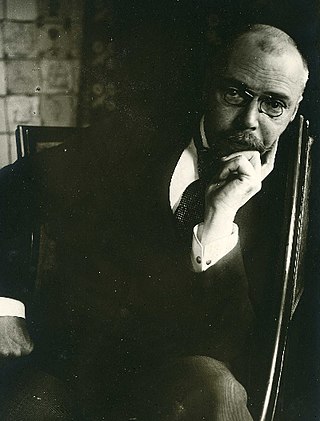
Paul Hoecker was a German painter of the Munich School and founding member of the Munich Secession
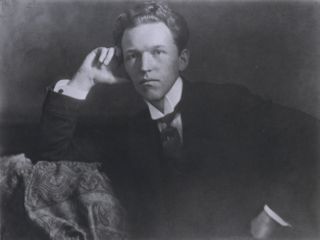
Sigwart Botho Philipp August zu Eulenburg, Count of Eulenburg was the second son of Philipp, Prince of Eulenburg (1847–1921) and his wife Augusta, born Countess of Sandels (1853–1941) and a German late romantic composer who fell in the First World War.
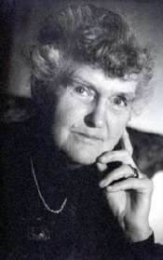
Margarete Ulrike Augusta Marie Karoline Elsa Reger was a German writer, the wife of the pianist and composer Max Reger, whose memory she kept alive by founding an archive, the Max-Reger-Institute, and a foundation, all dedicated to him and his work. The foundation is now named after her.

Arthur Siebelist was a German Impressionist painter.

Walter Alfred Rosam was a German Post-Impressionist painter of Jewish ancestry; known for still-lifes and landscapes.

Fritz Friedrichs was a German Post-Impressionist painter.

Eugen von Kahler, originally Eugen Kohn was a Bohemian-German painter, graphic artist and writer of Jewish ancestry. Most of his works are in the Expressionist style.

Ernst August Max Friedrich Rump was a German merchant, art patron and collector. In 1912, he wrote the Lexikon der bildenden Künstler Hamburgs, Altonas und der näheren Umgebung, which became a classic; generally referred to as Der Rump.
The Galerie Nierendorf is a commercial art gallery based in Berlin founded by Karl and Josef Nierendorf in 1920, and reopened in 1955 as the Galerie Meta Nierendorf by Florian and Inga Karsch.

Große Berliner Kunstausstellung , abbreviated GroBeKa or GBK, was an annual art exhibition that existed from 1893 to 1969 with intermittent breaks. In 1917 and 1918, during World War I, it was not held in Berlin but in Düsseldorf. In 1919 and 1920, it operated under the name Kunstausstellung Berlin. From 1970 to 1995, the Freie Berliner Kunstausstellung was held annually in its place.

The Kunstgewerbeschule Düsseldorf was opened on 3 April 1883 and closed at the end of the school year 1918. In 1919, its architectur training was transferred to the Kunstakademie Düsseldorf.
Kunst und Künstler: illustrierte Monatsschrift für bildende Kunst und Kunstgewerbe was a German periodical, that shaped the reception of art during the first third of the 20th century. It was in circulation between 1902 and 1933.
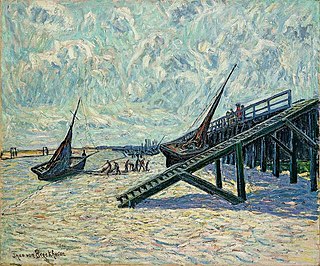
Theodor Adolf Hillmann von Brockhusen was a German painter, graphic artist, and etcher. Most of his works are landscapes.
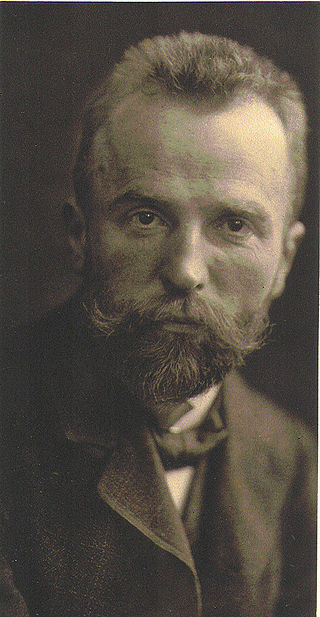
Karl Wilhelm Arthur Illies was a German painter and graphic artist.